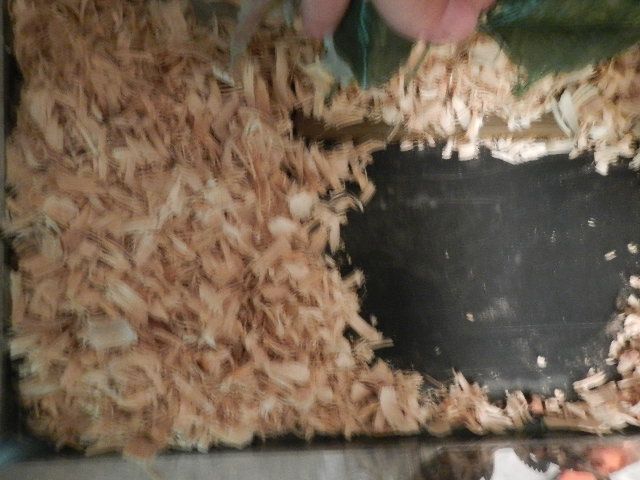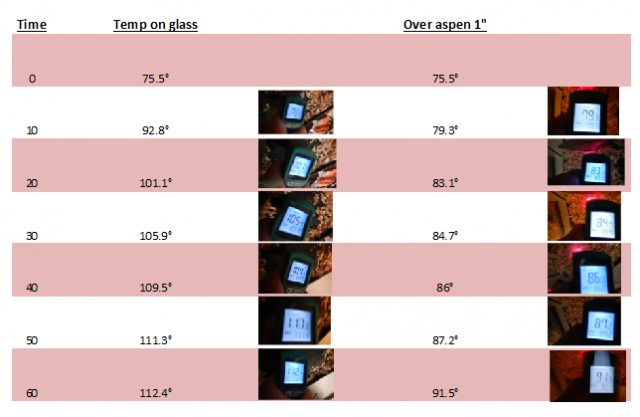drybgerg
Greg
I've go an unoccupied viv set up and thought I'd do a little testing with an unregulated (no thermostat or rheostat for temp control) UTH.
I'm doing this test with a Zoomed Reptitherm Large UTH on an All Glass aquarium. Measured via a handheld infrared temp gun with an accuracy of +-1%.
To start off with I measured the glass above the UTH and at 6" away I measured a spot that has 1" of aspen over the UTH. The starting measurements where 75.5° for both spots.
I then measured every 10 minutes for an hour. Will leave it on and see what the unregulated UTH maxes out at.
Sorry about the poor pic quality, was having lighting issues.
The testing area:

Results:

I'm doing this test with a Zoomed Reptitherm Large UTH on an All Glass aquarium. Measured via a handheld infrared temp gun with an accuracy of +-1%.
To start off with I measured the glass above the UTH and at 6" away I measured a spot that has 1" of aspen over the UTH. The starting measurements where 75.5° for both spots.
I then measured every 10 minutes for an hour. Will leave it on and see what the unregulated UTH maxes out at.
Sorry about the poor pic quality, was having lighting issues.
The testing area:

Results:

Last edited:

